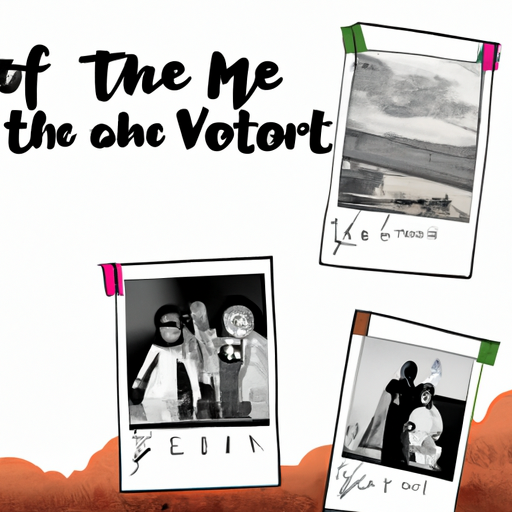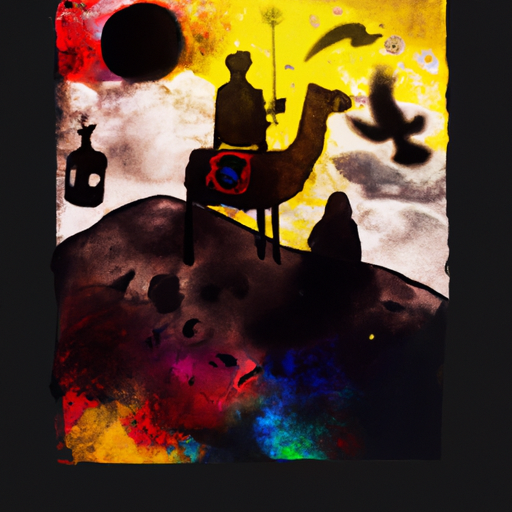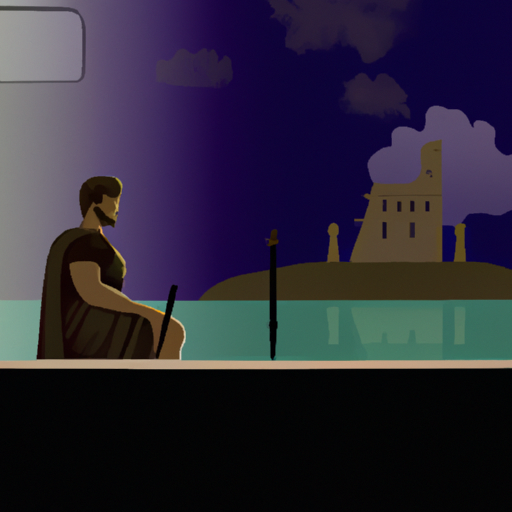The History of the Real God of Beauty
Uncover the annals of aesthetics and unearth who holds the title of its ultimate deity. Delve into the depths of this alluring subject to uncover its secrets and find out who is worthy of such a prestigious honor. Unveil the untold stories that have long been hidden away and uncover who reigns supreme in this mysterious realm. Discover the truth behind beauty and identify its rightful ruler!

Throughout the ages, beauty has been a source of fascination. While opinions may differ on who is the epitome of aesthetic perfection, a glance back into history could provide some clues. From Ancient Greece to contemporary culture, there have been countless influential figures that have impacted our perception of beauty. From celebrated painters and sculptors to trendsetting fashion designers and photographers, these people have all had a hand in the development of aesthetics throughout time. By exploring their works and contributions, we can gain insight into who should be crowned with such an esteemed title. By delving into the past, we can discover who reigns supreme in this enigmatic realm of beauty.
.
Introduction

Throughout the ages, many civilizations have assigned a being of unrivaled beauty and power to be the ultimate symbol of perfection. From Ancient Egypt’s Hathor, to Greece’s Aphrodite, Hinduism’s Lakshmi, and Buddhism’s Prajnaparamita, each culture has had its own interpretation of what it means to be beautiful. Whether it is fertility, love, fortune or wisdom that is seen as the epitome of beauty, one thing remains unchanged: the concept of a ‘real god of beauty’ has been around since time immemorial.
– Historical Origins of the Concept of the God of Beauty
For centuries, the notion of a deity devoted to beauty has been around, its roots stretching far back into antiquity. In olden days, Greek and Roman societies revered Aphrodite and Venus as gods of beauty, signifying the ideal female physique. In Hinduism, Kama is the god of love and desire.
Thomas Aquinas and Augustine of Hippo were two theologians from the Middle Ages who advanced the concept of a divine being associated with beauty. According to Aquinas, beauty was an attribute of God that could be seen in nature; he believed that natural beauty mirrored God’s perfection and grandeur. Augustine also wrote about beauty being part of God’s essence but put more emphasis on its spiritual aspects than physical ones. He advocated for inner beauty over outer beauty, contending that true loveliness must originate from within.
In modern times, many people still believe in a god or goddess of attractiveness. In some cultures they are viewed as embodying physical allurement while in others they are considered representatives of such inner qualities as tenderness or compassion. This belief continues to be an integral part of culture today; it is regularly employed to describe someone who is pleasing or stirring to others. As our understanding regarding what constitutes beauty evolves over time, so does our perception concerning who or what symbolizes it best; however, its ancient origins remain deeply rooted in our collective memory.
– Ancient Greek and Roman Beliefs About the God of Beauty
Mystique and enchantment have long been associated with the mysterious deities of beauty, first mentioned in Homer’s Iliad. Aphrodite, daughter of Zeus, was venerated as the most gorgeous goddess and held dominion over love, magnificence, and fertility. In Ancient Greece, she was also linked to nature such as blossoms and trees.
Venus was the Roman equivalent of Aphrodite; she too commanded love, beauty, and fertility. Her symbols included roses and doves. Often portrayed as a stunning woman wearing a crown of roses or clutching a dove in her hand, Venus was thought to bring luck and fortune to those who sought her favor. Consequently, many Romans built temples devoted to her throughout their cities.
Despite their similarities, these two gods had some noteworthy variations. For example, while Aphrodite embodied earthly forms of beauty like flowers and trees, Venus represented more spiritual forms such as gracefulness and charm. Furthermore, whereas Aphrodite had numerous admirers in mythology, Venus only had one: Adonis.
The Ancient Greeks and Romans both believed that beauty should be worshipped through honoring their respective gods – Aphrodite for the Greeks; Venus for the Romans – so that they could bring good luck into their lives by inviting love and beauty into it – an aspiration which we still strive for today!
– Comparisons Between Different Cultures’ Ideas of the God of Beauty
Throughout time, humanity has had a plethora of interpretations of the divine being that is Beauty. In Ancient Greece, Aphrodite was seen as the epitome of love, pleasure and beauty. She was typically portrayed with wings and a floral crown, symbolizing her celestial nature. In Egypt, Isis was venerated as the goddess of motherhood, fertility and beauty. Traditionally depicted with a cobra on her head or wearing a sun disk, she embodied the cycle of life. India’s Lakshmi stands for prosperity and beauty; often four-armed and standing atop a lotus flower.
Norse mythology brought forth Freyja – the deity of love, beauty, fertility and war – usually pictured in a cloak made from falcon feathers while carrying two cats in her chariot. Chinese culture honored Xi Wangmu as its goddess of immortality and eternal youthfulness; living in an enchanted peach garden where dragons and phoenixes roamed free.
The concept of Beauty has been ever-evolving throughout history; encompassing both physical attractiveness and inner radiance while still maintaining traditional values such as strength or fertility. Despite any cultural discrepancies between these gods or goddesses, they all share universal qualities that are still appreciated today: grace, wisdom, power, creativity and compassion.
– The Evolution of Representations of the God of Beauty Through History
Throughout time, conceptions of the Deity of Splendor have shifted and altered. From the old Greeks to modern-day translations, the thought of beauty has been translated in a variety of ways. The ancients venerated Aphrodite as the goddess of love and splendor, usually portrayed as a young woman with an alluring face and body, oftentimes accompanied by doves or other birds. The Romans accepted her as Venus and she was seen as a symbol of fertility and carnal longing.
In medieval Europe, representations of beauty moved from physical characteristics to moral values. The Virgin Mary turned into a well-known figure in art, speaking to immaculateness, modesty, and maternal affection. This idea was further fortified during the Renaissance period when classical structures were utilized to depict idealized renditions of human figures. Amid this time, beauty was connected with poise and proportionality instead of physical components.
The ascent of Romanticism brought about another understanding of magnificence that concentrated on feelings and emotions rather than physical qualities. Scholars like William Wordsworth depicted nature’s excellence regarding its sublime power while craftsmen such as Caspar David Friedrich painted sensational scenes that stirred up sentiments of amazement and wonderment.
Toward the finish of the nineteenth century, Impressionist painters like Monet started to inspect how light could be utilized to make wonderful scenes on canvas. This style accentuated delicate brushstrokes and dynamic hues that made an enchanted air for watchers to escape into. At the same time, picture takers like Alfred Stieglitz tried different things with camera strategies to catch fleeting snapshots of nature’s excellence.
Today, depictions of beauty are more assorted than any other time in recent memory. While some customary ideas stay pertinent today, others have been reinterpreted through current focal points such as innovation or web based life patterns. Regardless of whether it is through advanced craftsmanship or design photography, individuals currently approach more assets than any other time in recent memory to investigate what makes them feel excellent in their own remarkable way
– Religious Texts and Their Impact on Beliefs About the God of Beauty
Throughout time, the influence of holy texts on our ideas of the God of Splendor has been immense. Ancient scriptures such as the Bible, Quran, and Vedas all contain references to this concept. The Psalms mention that one should seek out and admire the beauty of the Lord (Psalm 27:4), while in Islam Allah is hailed as “the most beautiful” and “the best of creators” (Quran 59:24). Hinduism describes Shiva, a deity with four arms symbolizing his control over nature and a garland of skulls representing death and rebirth, as a god of beauty.
Moreover, these texts provide guidance on how we should regard ourselves and others. The Bible encourages us not to judge someone based solely on their physical appearance (1 Samuel 16:7), while Islamic teachings emphasize modesty when it comes to dress (Quran 24:30-31) in order for people to focus more on spiritual aspects than physical ones.
Thus, religious texts have had an immense effect on our beliefs about beauty in relation to divinity. They have provided examples from various faiths that emphasize its importance in understanding our relationship with the divine being or deity, while also offering advice on how we should view ourselves and others so that we can appreciate beauty beyond just appearances.
conclusion

A perplexing and often divisive question that has been pondered for centuries: who or what is the true god of beauty? Opinions vary around the world, with some holding that beauty comes from within while others ascribe it to external sources such as nature or art. In the end, it is a decision each person must make for themselves.
.
Some questions with answers
Q1. Who is the real god of beauty in history?
A1. According to Greek mythology, Aphrodite is the goddess of beauty and love.
Q2. What are some of Aphrodite’s symbols?
A2. Aphrodite’s symbols include roses, doves, swans, myrtle, and apples.
Q3. How did Aphrodite become the goddess of beauty?
A3. According to myth, Aphrodite was born from sea foam when Cronus cut off Uranus’ genitals and threw them into the sea.
Q4. How did Aphrodite influence ancient Greek culture?
A4. In ancient Greece, Aphrodite was associated with fertility and sexuality, and her cult was one of the most popular among the Greeks. She was also seen as a protector of sailors who invoked her aid for safe passage across the seas.
Q5. What is one of the most famous stories about Aphrodite?
A5. One of the most famous stories about Aphrodite is her affair with Ares, which caused a great deal of strife between them and their respective families.




